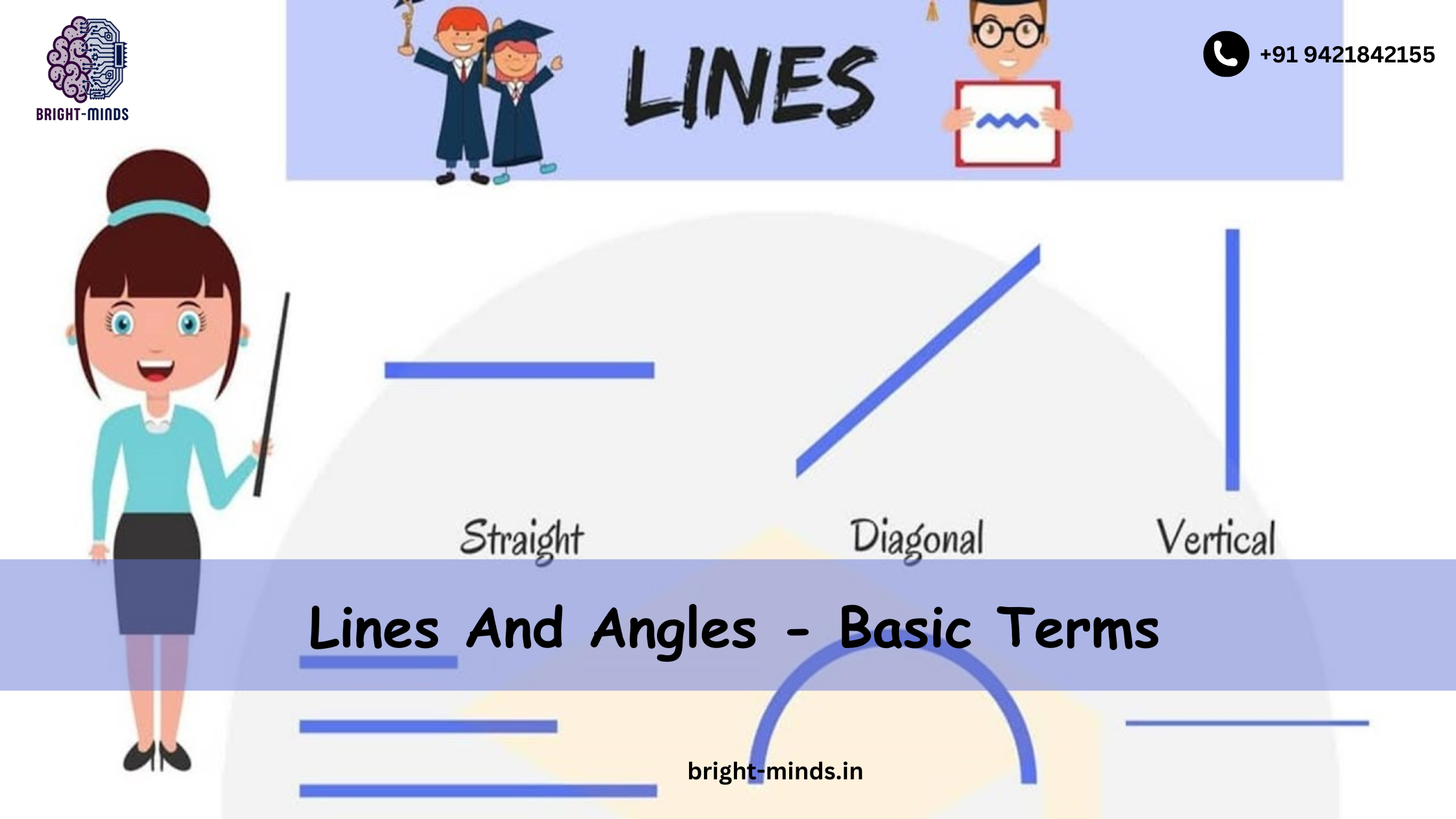The fundamental shapes in geometry are lines and angles. Figures composed of infinite points that stretch forever in both directions are called lines. Lines have very little breadth or depth and are straight. You will learn about many different types of lines, including transversal, intersecting, and perpendicular lines. A figure with two rays emerging from a single point is called an angle. In this field, you could also encounter equivalent and opposite angles. The most useful area of mathematics is geometry, including its shapes and characteristics.
Definition of Lines and Angles
As we’ve seen, the foundation of any geometric shape is made up of both lines and angles. Without lines and angles, it is impossible to create a three-dimensional shape from a two-dimensional one. Therefore, understanding the meanings of both terms is crucial.
The fundamental definitions and characteristics of lines and angles are provided here. The pupils will get a foundational understanding of these geometrical concepts.
What are Lines?
A line is a straight one-dimensional figure, that extends in the opposite directions infinitely. A line can be horizontal or vertical. It can be drawn from left to right or top to bottom.
What are Angles?
Angles are the shape that is formed when the endpoints of two rays meet at a single point. They are measured in degrees (°) or radians. A complete rotation is equal to an angle of 360 degrees. It is represented by the symbol ‘∠’.
Types of Lines and Angles
There are various types of lines and angles in geometry based on the measurements and different scenarios. Let us learn here all those lines and angles along with their definitions.
Types of Lines
Lines are basically categorized as:
- Line segment
- Ray
Based on concepts or operations performed on lines, they are;
- Parallel Lines
- Perpendicular Lines
- Transversal
Line Segment

A line segment is a part of a line with two end-points. It is the shortest distance between two points and has a fixed length.
Ray

A ray is a part of a line, which has a starting point and extends infinitely in one direction.
Perpendicular Lines
When two lines form a right angle with each other, by meeting at a single point, are called perpendicular lines. In the figure, you can see, lines AB and CD are perpendicular to each other.

Parallel Lines
Two lines are said to be parallel when they do not meet at any point in a plane or which do not intersects each other. In the figure, lines PQ and RS are parallel to each other.

Transversal Line
When a line intersects two lines at distinct points, it is called a transversal. In the figure, a transversal l is intersecting two lines at point P and Q.

Types of Angles
Angles are essentially divided into:
- Acute Angle (less than 90°)
- Right Angle (90°)
- Obtuse Angle (>90°)
- 180° is the straight angle.
Additionally, depending on the conceptual relationship between two angles, they are
- Additional Angles
- Angles That Complement Each Other
- Contiguous Angles
- Angles that are vertically opposed
Acute Angle
If the inclination between the arms is less than a right angle, it is called an acute angle.
Obtuse Angle
If the inclination between the arms is more than a right angle, it is called an obtuse angle.
Right Angle
If the arms form an angle of 90 degrees between them, it is called a right angle.
Straight Angle
If the arms form an angle of 180 degrees between them, it is called a straight angle.
Complementary Angles
Two angles which sum up to 90 degrees are called complementary angles.

Supplementary Angles
Two angles which sum up to 180 degrees are called supplementary angles.

Adjacent Angles
Two angles which have a common side and a common vertex are called adjacent angles. In the following figure, ∠α and ∠β are adjacent angles.

Vertically Opposite Angles
Vertically opposing angles are created when two lines intersect at a common point or vertex, creating two angles that are opposite to one another. In the figure that follows;
∠POR = ∠SOQ and ∠POS = ∠ROQ

Video Lesson on Lines
For More Information On Lines, Watch The Below Video:
10,432
Video Lessons on Types and Parts of Angles
Types of angles
1,36,490
Parts of Angles
14,976
Properties of Lines and Angles
Similar to other shapes and sizes in geometry, lines and angles also have their own properties. Let us see what are they.
Properties of Lines
- Collinear points are a set of three or more points which lie on the same line.
- The points which do not lie on the same line are called non-collinear points.
Note: Three points can be either collinear or non-collinear, but not both together at the same time.
Properties of Angles
- A figure with two rays emerging from a single point is called an angle. The two rays that make up the angle are referred to as its arms or sides, and this point is known as the angle’s vertex.
- Reflex angles are those that are larger than 180 degrees but less than 360 degrees.
- A linear pair of angles is formed when two neighboring angles add up to 180 degrees. ∠a and ∠b create a linear pair in the following diagram.

- The two opposing sets of angles that result from the intersection of two lines are referred to as vertically opposite angles. ∠A and ∠B are vertically opposed angles in the accompanying figure. ∠ C and ∠ D is another pair.

It might be helpful
Unlock Your Child’s Curiosity with These Exciting GK Questions!

